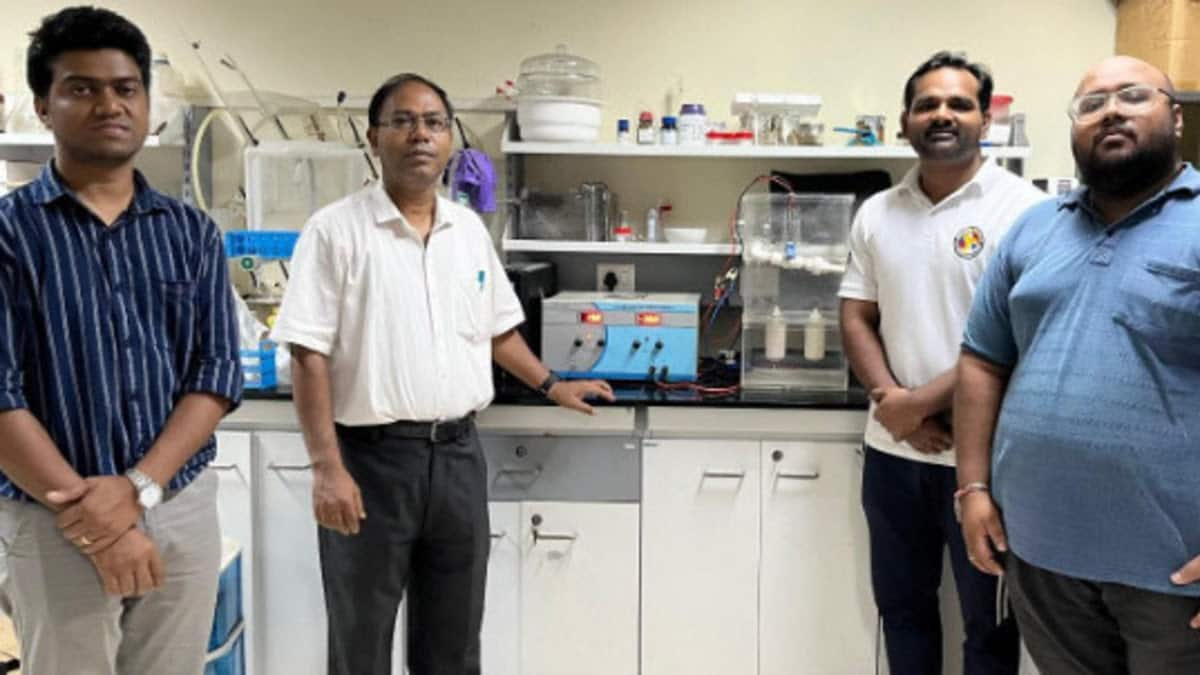IIT Guwahati develops wastewater treatment technology that can treat 1,000 litres for Rs 20
Gauri Mittal | June 19, 2025 | 03:44 PM IST | 2 mins read
IIT G’s four-step method is cost-effective for regions with poor water availability. It is able to successfully remove 94% iron and 89% fluoride from water.

The department of chemical engineering at the Indian Institute of Technology (IIT) Guwahati has found a cost-effective solution for treating contaminated groundwater. The four-step methodology has proven successful in removing 94% of iron and 89% of fluoride from wastewater, bringing the water levels well within the Indian safety standards.
The key feature of this research was that it requires only Rs 20 to treat 1,000 litres of water. The new technology can clean up to 20,000 litres of water per day. It has a projected lifespan of 15 years if electrodes are replaced about once every six months.
Also read IIT Guwahati develops sustainable solution using mushroom waste for wastewater treatment
The findings of this research, done over 12 weeks, have been published in the ACS ES&T Water journal. The paper is co-authored by the research team from the department of chemical engineering - Mihir Kumar Purkait, faculty; Anweshan and Piyal Mondal, post-doctoral research associates; and Mukesh Bharti, research scholar.
Water Treatment: Research implementation
In collaboration with the public health engineering department of Assam, this technology has been installed by Kakati Engineering Private Limited in Changsari, Assam.
IIT Guwahati’s four-step treatment plan for contaminated water is given below:
- Aeration is adding oxygen to the water to help dissolve the iron.
- Electrocoagulation is passing an electric current through the water with the help of aluminium electrodes to release charged metal particles (ions) that will bind the impurities.
- Flocculation is letting the particles bind into clumps and settle down.
- Filtration is the process of moving the water through a filter of sand, coal and gravel to remove any remaining contaminants.
IIT Guwahati research on water contaminants
Fluoride is a commonly found water contaminant in Rajasthan, Telangana, Andhra Pradesh, Karnataka, Haryana, and Gujarat. It can enter groundwater either naturally or through human activities like agriculture or manufacturing, according to a statement. Consumption of excess fluoride in water can lead to skeletal-fluorosis, a disease in which joints become stiff and movement is painful, explains the statement.
“We are also exploring the use of solar or wind power to operate the unit and to utilise the hydrogen gas generated during electrocoagulation process,” said Purkait, talking about the scope of this project.
Follow us for the latest education news on colleges and universities, admission, courses, exams, research, education policies, study abroad and more..
To get in touch, write to us at news@careers360.com.